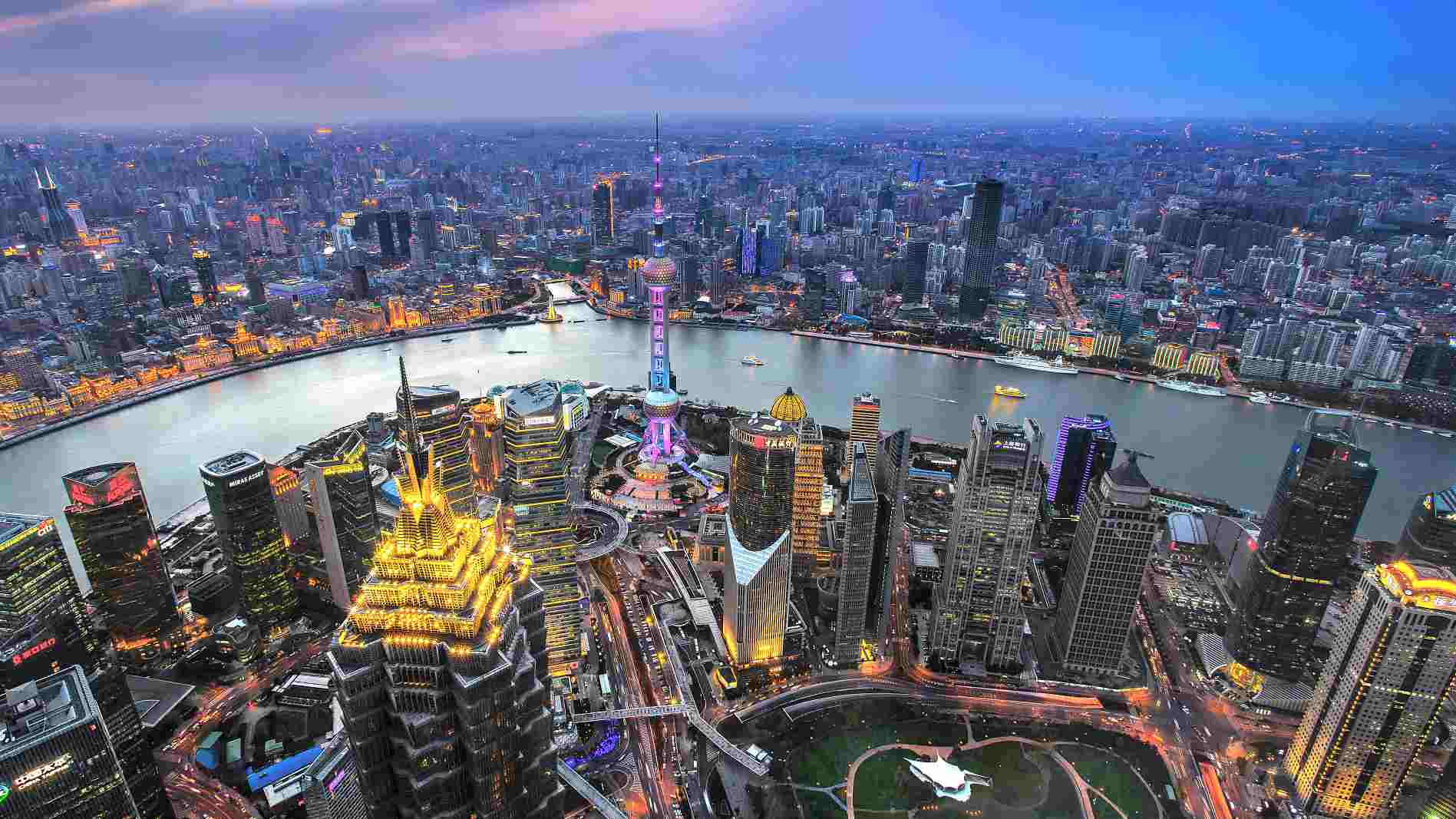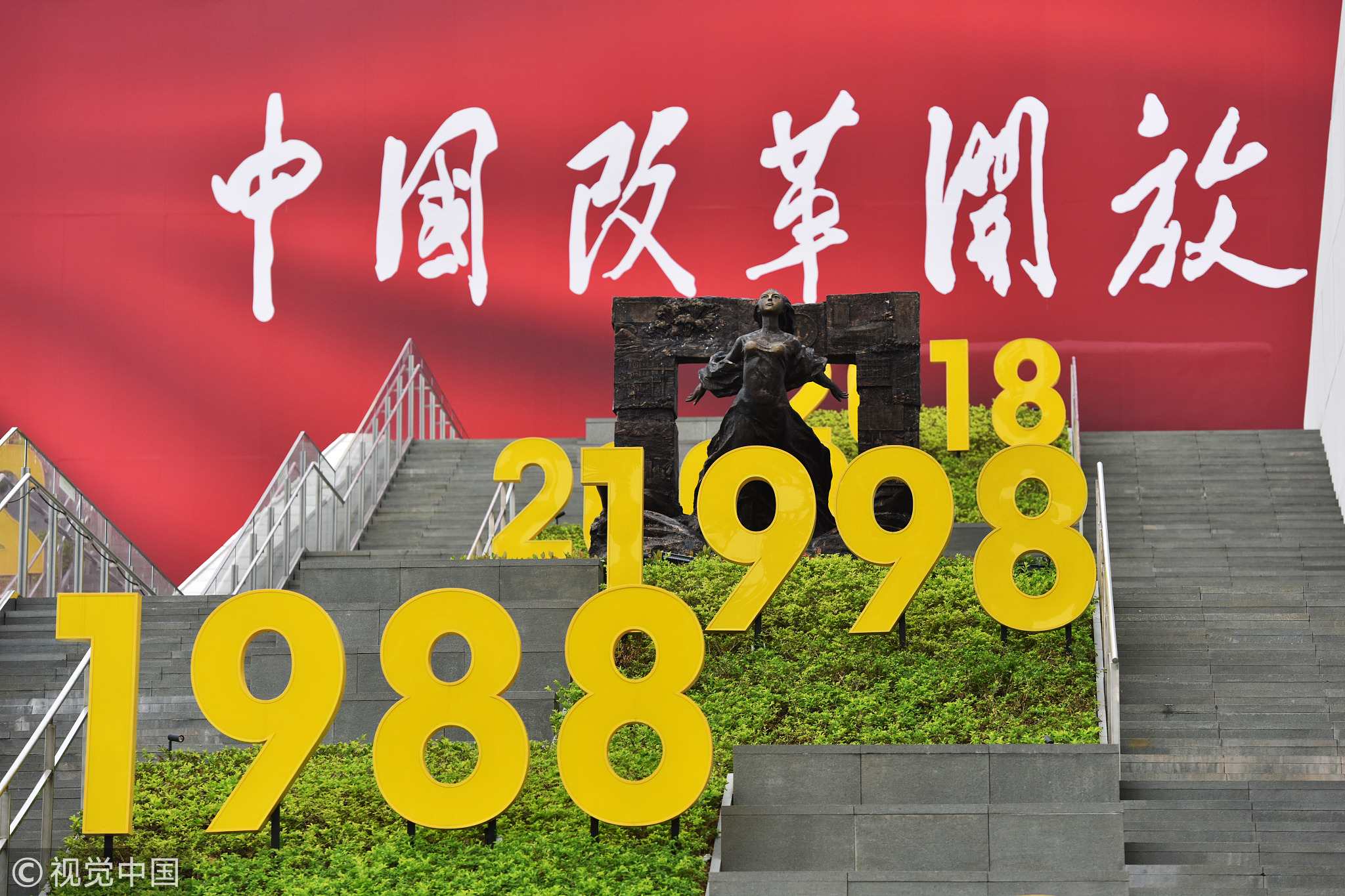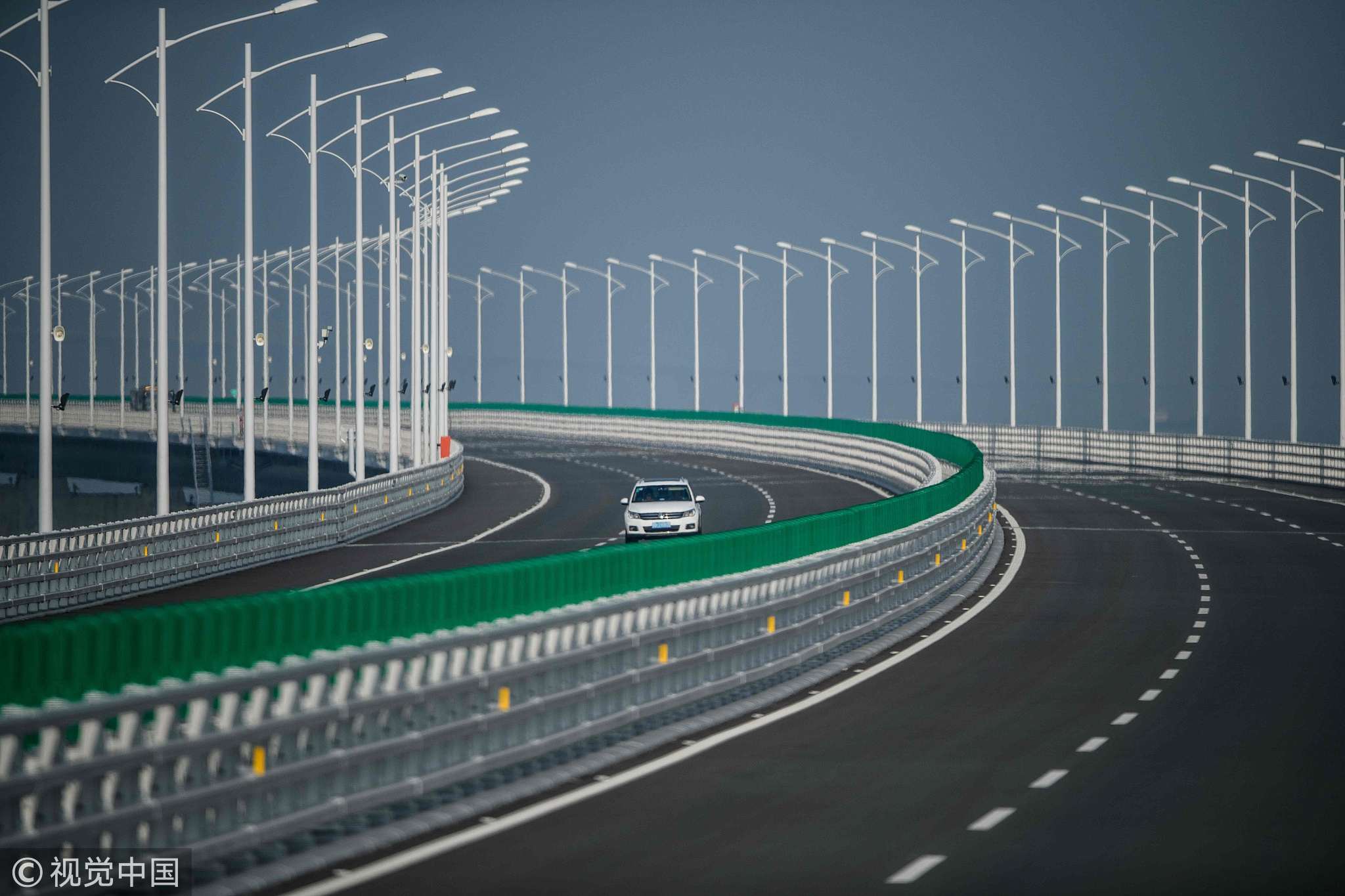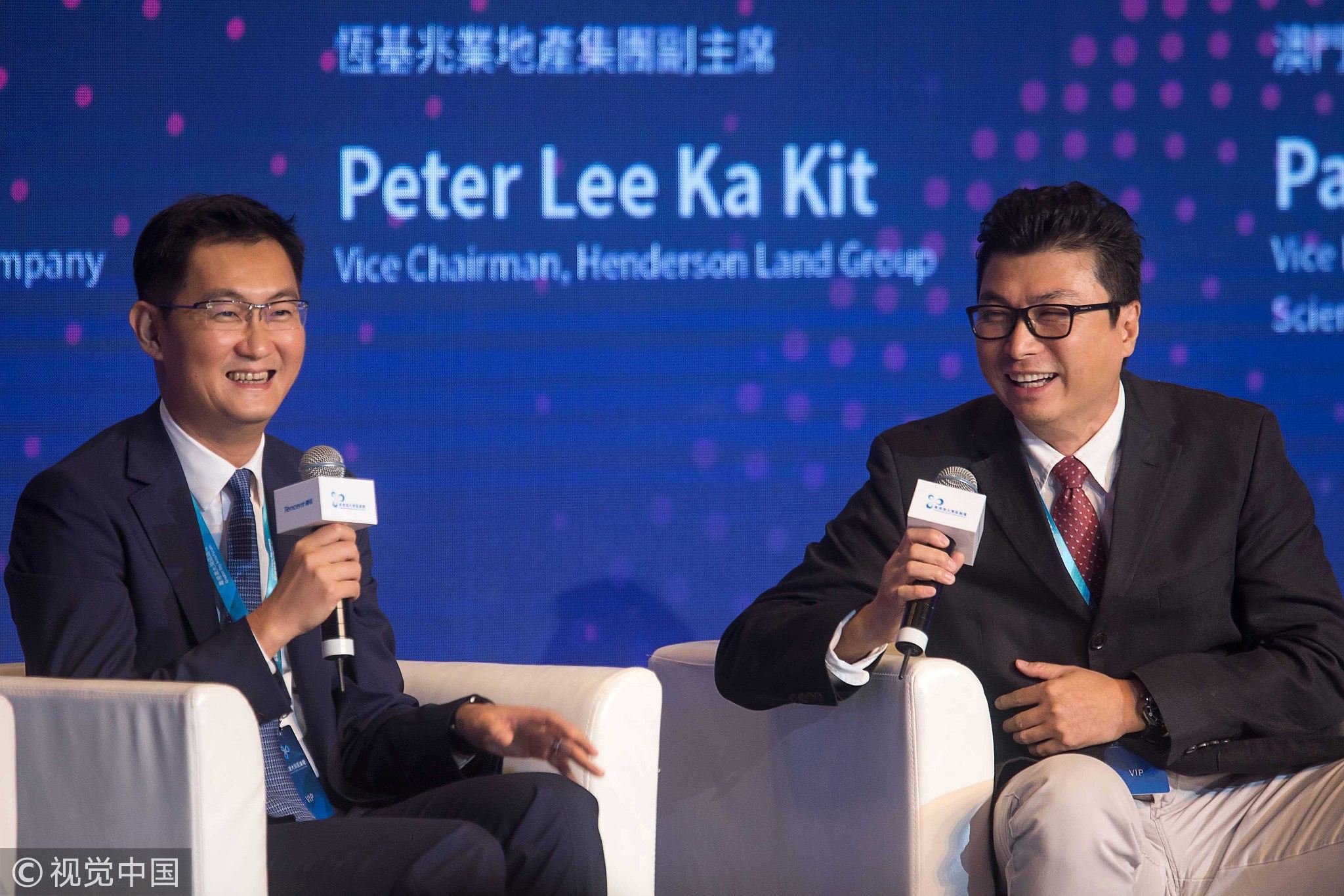
Opinions
09:49, 27-Oct-2018
Reform and opening-up emphasized in Xi's southern tour
Updated
08:58, 30-Oct-2018

Editor's Note: This article is an edited translation published by China Plus on October 26, 2018 of a commentary from the Chinese-language "Commentaries on International Affairs".
During his recent inspection tour of Guangdong Province, the vanguard of the country's reform and opening-up, Chinese President Xi Jinping called on the region to continue to deepen its reforms and expand its opening-up.
By making this call in the context of the significant changes taking place in both the international and domestic environments, President Xi sent a clear and powerful signal to the world that China is committed to the policy that turned it into an economic powerhouse.
But with growing unilateralism, protectionism, and populism, an escalation in global trade frictions, and downward pressure on its economy, how will China react in the face of these challenges?
While President Xi was in Guangdong, he stressed that reform and opening-up is the key to determining China's destiny.
"For 40 years, the achievements of China's development have impressed the world. Since it is getting better and better, why not continue to advance? Even if we face a diverse range of difficulties and problems, they can be resolved and overcome through an ongoing process."
To this end, he said that China will not stop its reforms, and its opening will not come to a halt.

A view of China's first "reform and opening-up" museum in Shenzhen, Guangdong Province. /VCG Photo
A view of China's first "reform and opening-up" museum in Shenzhen, Guangdong Province. /VCG Photo
How, then, can China expand its process of reform and opening-up in the face of increasingly complex domestic and international challenges? From the perspective of President Xi's inspection tour and the remarks he made in Guangdong, it seems that there will be at least four major points of focus.
First, China will accelerate capacity building for independent innovation. Following the innovation-driven development strategy launched in 2013, and the goal announced in 2017 for China to be at the forefront of innovative countries by 2035, China broke into the list of top 20 most-innovative economies in the WIPO Global Innovation Index 2018.
And the opening of the Hong Kong-Zhuhai-Macao Bridge, the world's longest sea bridge, this week is a demonstration of China's capacity for innovation: Its design and construction generated more than 400 patents.
But there are some areas where China would benefit from greater indigenous innovation, such as jet engines and chips, for which China still relies heavily on imports.
President Xi encouraged personnel at science and technology enterprises to accelerate the development of their capacity for innovation and strive to achieve independence in core technologies. This is because independent innovation will be the key to expanding China's reform and opening-up.

The Hong Kong–Zhuhai–Macao Bridge opened to traffic on October 24, 2018. /VCG Photo
The Hong Kong–Zhuhai–Macao Bridge opened to traffic on October 24, 2018. /VCG Photo
Second, China must equip its manufacturing industry with digital, Internet, and smart technologies.
Despite its rapid development over the past 40 years to become the world's largest in 2010, China's manufacturing industry is still in the low- to mid-range in the global value chain at a time when the world is experiencing a technological revolution dominated by artificial intelligence, clean energy, quantum information technology, and biotechnology.
This is why President Xi emphasized that a more technologically advanced manufacturing sector is crucial to the country's economy and will offer more opportunities for foreign investment in China.
Third, the development of free trade zones and the development of the Guangdong-Hong Kong-Macao Greater Bay Area are set to continue. China has approved the establishment of 12 free trade zones since 2013, which are a frontier in the push to further open the country's economy to the world.
And following in the footsteps of the New York, San Francisco, and Tokyo bay area developments, China is building the world's fourth-largest bay area. The Guangdong-Hong Kong-Macao Greater Bay Area will become a global financial hub and innovation center.

Ma Huateng (left), chairman and chief executive officer of Tencent Holdings Ltd., and Wang Wei, chairman of SF Holding Co., attend the Guangdong-Hong Kong-Macao Greater Bay Area Forum in Hong Kong, China, on June 20, 2017. /VCG Photo
Ma Huateng (left), chairman and chief executive officer of Tencent Holdings Ltd., and Wang Wei, chairman of SF Holding Co., attend the Guangdong-Hong Kong-Macao Greater Bay Area Forum in Hong Kong, China, on June 20, 2017. /VCG Photo
Fourth, China will pay more attention to balanced and coordinated development. A major challenge facing China is the need to find a way to balance the people's ever-growing needs for a better life and the impact of unbalanced development.
This is why President Xi visited the city of Qingyuan during his tour of Guangdong, China's most economically-developed province. Qingyuan is shouldering the difficult task of ridding itself of the remnants of severe poverty.
Xi pointed out that the imbalance between urban and rural development is the biggest shortcoming of Guangdong's high-quality development, and called on local officials to accelerate the rural revitalization and the formation of a new type of regionally-coordinated development that meets the needs of the people through sustainable and balanced growth.
For the past four decades, China has advanced its policy of reform and opening-up, embracing ever-growing cooperation and engagement with the wider world.
"China's reform and opening-up has contributed important experience and wealth to human development," said Boulding Polachek, the director of the Center for Europe at the University of Warsaw.
It "provides an important reference point for the world, especially for countries exploring a path to development," Polacheck added.
President Xi Jinping's tour of Guangdong once again shows that, despite the uncertainties it faces in the world, China's adherence to the reform and opening-up policy is as strong now as it ever was.
(If you want to contribute and have a specific expertise, please contact us at opinions@cgtn.com.)

SITEMAP
Copyright © 2018 CGTN. Beijing ICP prepared NO.16065310-3
Copyright © 2018 CGTN. Beijing ICP prepared NO.16065310-3